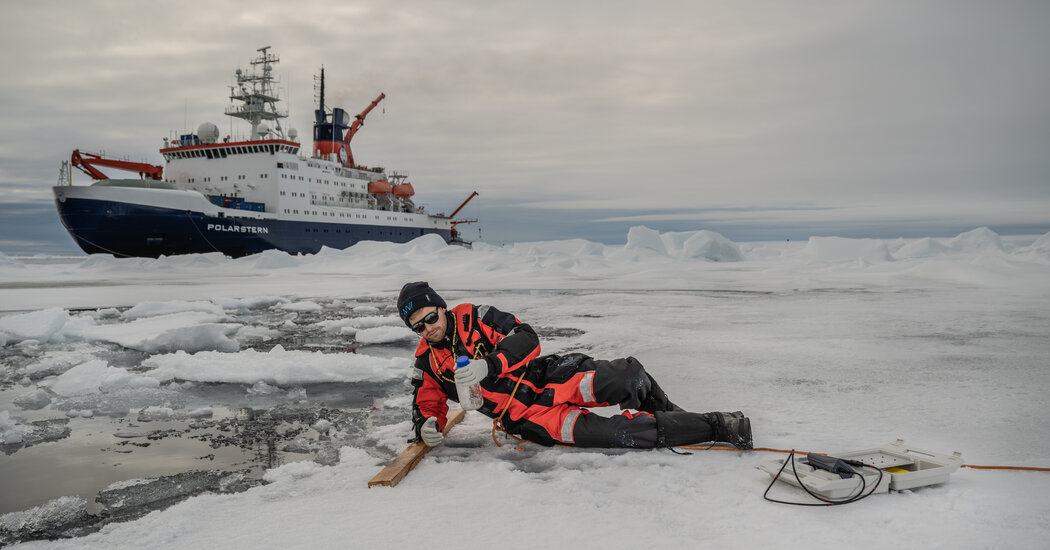Three years after its marathon voyage across the Central Arctic Ocean frozen in the ice, the German scientific research ship Polarstern has once again reached the North Pole.
This time the expedition is shorter, two months rather than a full year, and the ship is powering through the ice, not encased in it and adrift. But the goal of the scientists on board is the same: a better understanding of how the Central Arctic is changing as the planet warms.
Sea-ice coverage in the Arctic shrinks in spring and summer and reaches a minimum in mid-September. This year, it’s on track to be the sixth lowest on record.
The record was set in 2012, and Polarstern was in the Arctic that year, too.
Antje Boetius, a marine biologist, was chief scientist of both expeditions.
Last week the ship was in the Amundsen Basin, having spent the previous week at the pole, 120 miles to the north. In an email written onboard, Dr. Boetius wrote that Polarstern was returning to many of the spots it visited 11 years ago. “Hence we can directly compare — be it ice thickness, snow cover, ice algae, the composition of plankton, ocean chemistry or what lives at the seafloor,” she wrote.
The current expedition, called ArcWatch, includes more than 50 biologists, chemists and other scientists using specialized instruments brought along for the voyage as well as two helicopters.
Since satellite observations of Arctic sea ice began in 1979, coverage has declined by about 13 percent per decade, a consequence of warming in a region that is heating much faster than other parts of the planet. At its peak in winter, ice covers about 6 million square miles, on average, of the Arctic Ocean. The 2012 record low was 1.3 million square miles. Most of the years since then have ranked among the 10 lowest.
This year is no exception. As of Tuesday, ice coverage was 1.63 million square miles and was within a few days of reaching the minimum for the year, according to the National Snow and Ice Data Center in Boulder, Colo.
Polarstern, a 400-foot double-hulled icebreaker, is owned by the German government and operated by the Alfred Wegener Institute, and carries a crew of about 40, including a baker who continues a ship tradition of providing cake every afternoon.
During the 2020 expedition, called Mosaic, the scientific team was changed every few months, but for ArcWatch the researchers are on board for the duration of the voyage, which began in northern Norway in early August and ends Oct. 1 at the ship’s home port, Bremerhaven, Germany. (Another difference between the two expeditions: Mosaic’s journey was severely disrupted by the coronavirus pandemic and what turned out to be a successful effort to avoid an onboard outbreak.)
During ArcWatch, the researchers are also deploying buoys and instruments on the ice, part of an international collaboration to provide year-round data about weather and sea conditions in the Central Arctic, one of the least accessible areas of the world, especially in winter. Using sonar equipment the expedition is also mapping the ocean floor in remote parts of the Arctic.
“We come across uncharted seamounts, with unknown landscapes and communities of ocean life, because there is so little research infrastructure out here,” Dr. Boetius wrote. “I have these fantastic explorer moments, where we just discover.”
This is Dr. Boetius’s 50th deep-sea expedition. She first voyaged in the Arctic three decades ago, as a young doctoral student. “In those 30 years everything has changed, from the ice to the deep-sea floor,” she wrote. “I could not have imagined the climate crisis we are in today; And I discuss this with the young Ph.D. students here, who know that the Arctic they witness today will not be there for them in 30 years from now.”











